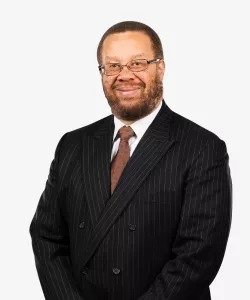Southern District of New York Partially Vacates Department of Labor's Joint Employer Rule
It’s not uncommon for a worker to perform services for an employer – A – that simultaneously benefit another person – B.
(Under the FLSA, “person” means “any individual, partnership, association, corporation, business trust, legal representative, or any organized group of persons.”) During the Obama presidency, the Department of Labor employed a broad “economic realities” test to determine whether A and B are the worker’s joint employers.
Effective in March, however, the current Department of Labor took a different, and much more narrow, approach. Eschewing the economic realities test, the Department adopted a four-factor balancing test focused on the extent to which a purported employer – B in the example – controls the worker’s employment terms and conditions.
Specifically, the new Rule asks whether the prospective joint employer:
- Hires or fires the worker;
- Supervises and controls her work schedule or conditions of employment to a substantial degree;
- Determines her rate and method of payment; and
- Maintains her employment records.
The potential joint employer must actually exercise — directly or indirectly — one or more of those indicia of control to be liable to the employee under the FLSA.
Economic dependence is irrelevant under the Rule. So are certain business models (such as a franchise model), certain business practices (such as allowing the operation of a store on one’s premises), and certain contractual agreements (such as requiring a party in a contract to institute sexual harassment policies), which the Department once considered germane to its analysis.
Contending that it violates the Administrative Procedures Act, 17 state attorneys general challenged the Rule in the U.S. District Court for the Southern District of New York. Last week Judge Gregory Woods agreed with them and vacated the part of the Rule that deals with vertical employment, in which the worker has an employment relationship with one employer (typically a staffing agency, subcontractor, labor provider, or other intermediary employer) that places workers with another entity.
Regarding that type of employment, Judge Woods held that the Rule is discordant with the FLSA, out of step with judicial present, and unduly focused on control. He held, as well, that the Department failed to explain its departure from its prior statutory interpretations. Said Judge Woods:
To be clear, the Department’s justifications for engaging in rulemaking are valid. Promoting uniformity and clarity given the (at least superficially) widely divergent tests for joint employer liability in different circuits is a worthwhile objective. The Court is sympathetic to the Department’s concern that putative joint employers face uncertainty, and that this uncertainty is costly. This opinion does not imply that the Department cannot engage in rulemaking to try to harmonize joint employer standards.
But the Department must do better than this. Any future rulemaking must adhere to the text of the FLSA and Supreme Court precedent. If the Department departs from its prior interpretation, it must explain why. And it must make more than a perfunctory attempt to consider important costs, including costs to workers, and explain why the benefits of the new Rule outweigh those costs. Because the Final Rule does none of these things, it is legally infirm.
Franchise businesses and companies that outsource likely won’t cheer Judge Woods’s decision. But, the Rule’s provisions addressing horizontal employment — in which a worker has employment relationships with two or more closely associated employers — remain in force.
The decision is New York v. Scalia, 1:20-CV-01689-GHW (S.D.N.Y. Sept. 8, 2020). The Department of Labor has not announced whether it will file an appeal.
Contacts
- Related Practices

